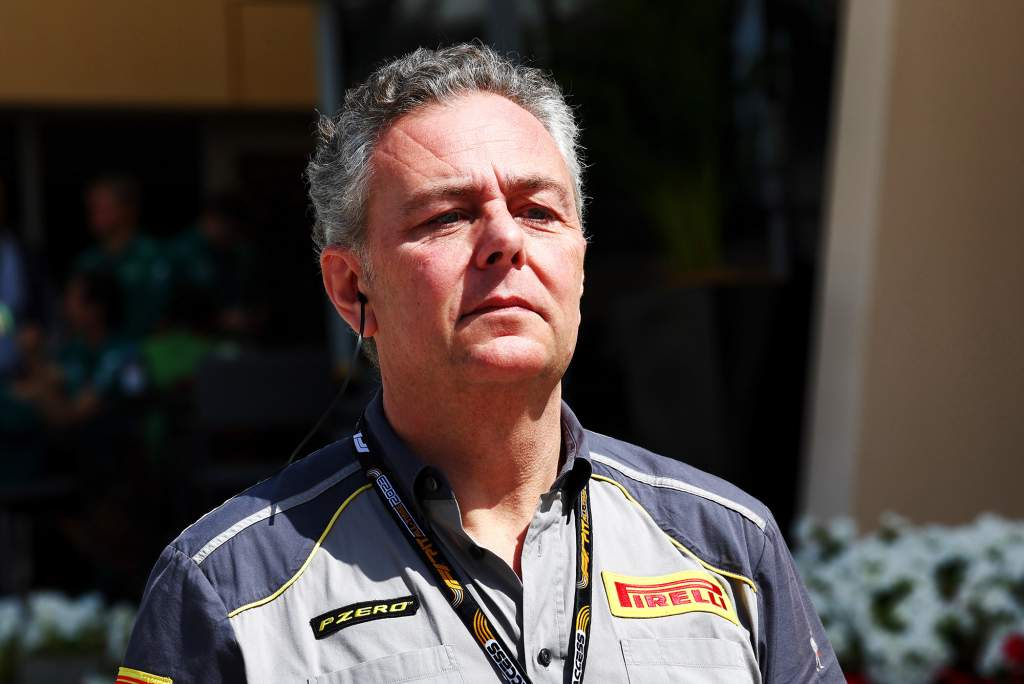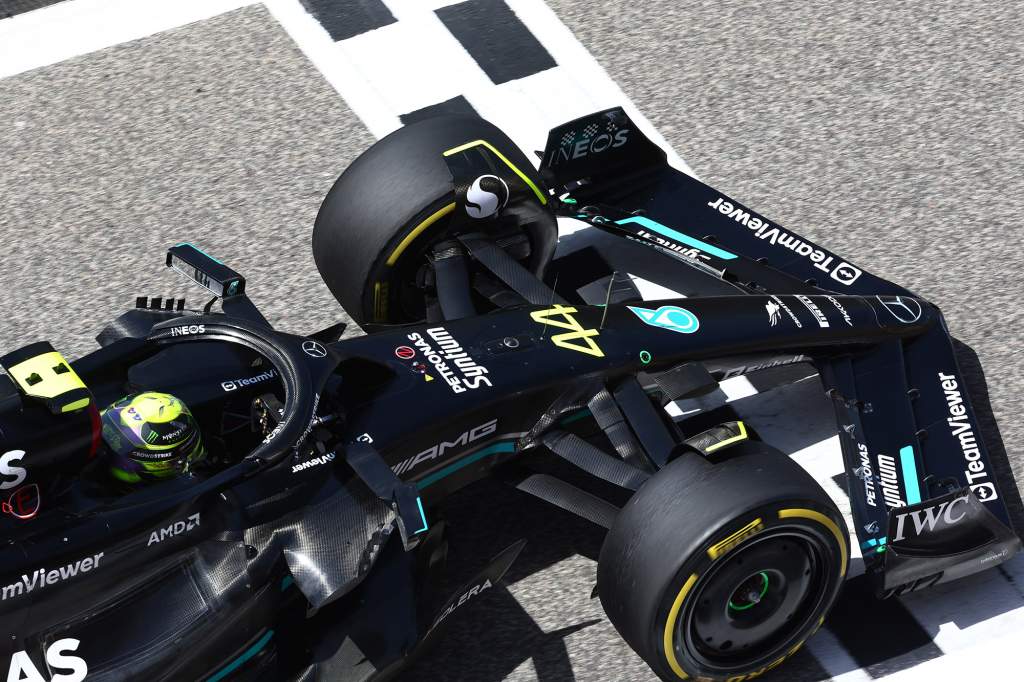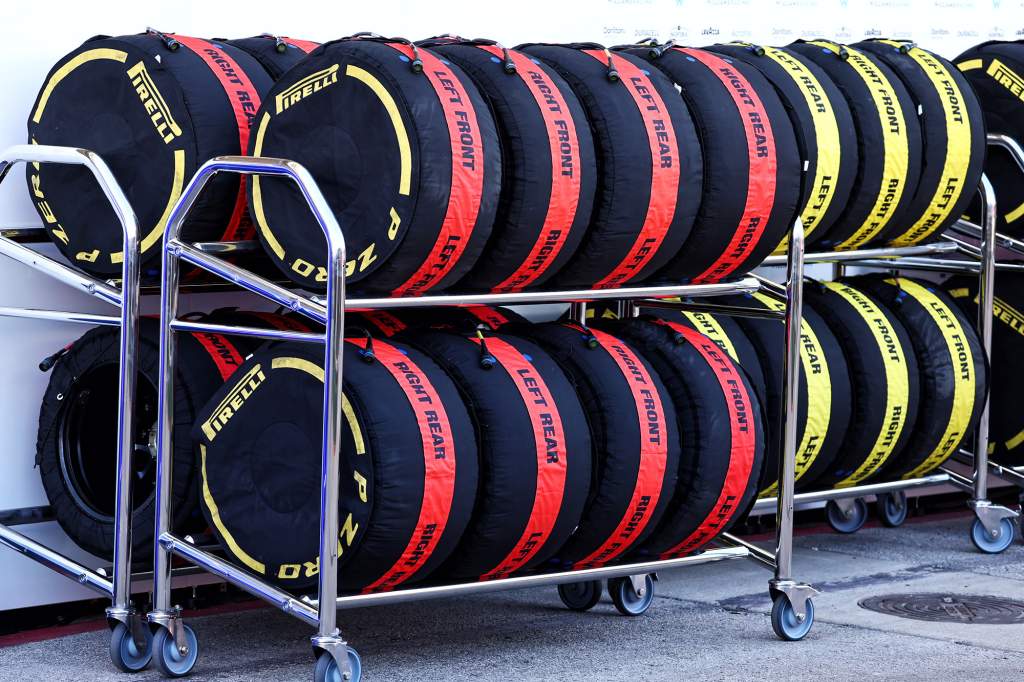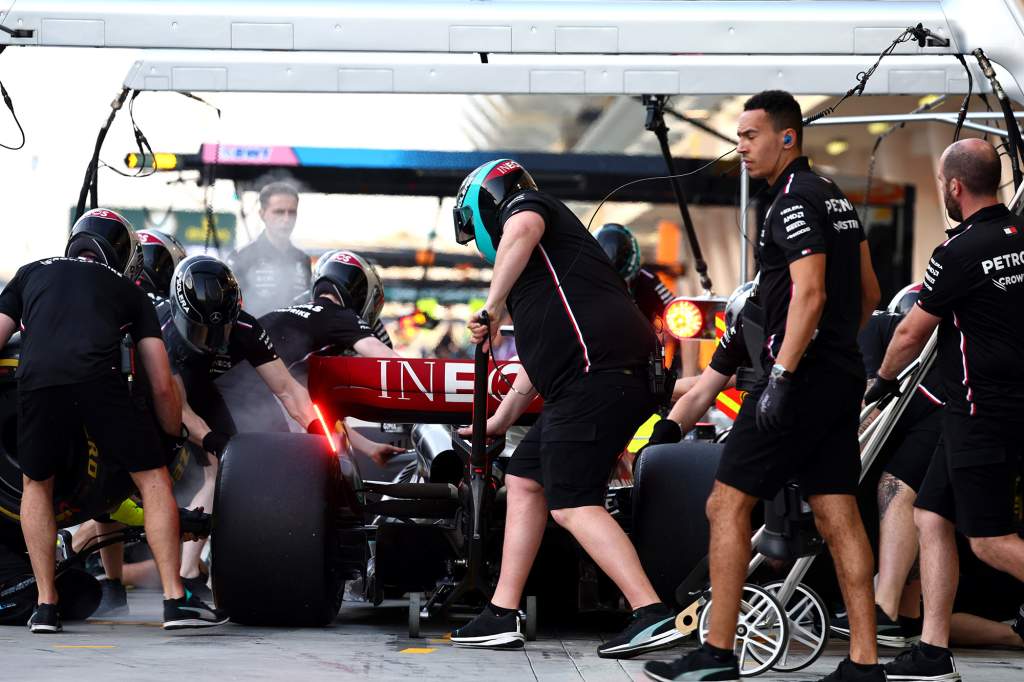Up Next

Producing tyres that provide a decent level of grip straight out of the pits will be the “key parameter” in deciding whether Formula 1 can go ahead with the mooted tyre blanket ban for 2024 that Lewis Hamilton recently described as “dangerous” and “pointless”.
The ban on tyre blankets for next season has long been planned, but in the latest issue of the current technical regulations, which includes a section detailing changes for 2024, it was put on temporary hold.
The regulations state that the 2023 tyre rules will be carried over, subject to an evaluation process that could allow all tyre heating devices (so this applies not only to blankets but also tents and other such systems) to be banned as originally planned.
For this to happen, it must be voted through by the F1 Commission in a vote before the end of July. The changes for 2024 regulations state that to do so will require a “simple majority”, defined as five of the 10 teams.
Hamilton is well-placed to comment on the tyres given both he and George Russell drove them on a 2022 Mercedes in a Pirelli test at the start of February as part of the ’24 tyre test programme. However, it should be noted this was in cold conditions and using rubber that still in development and far off the final product.

Pirelli’s head of F1 Mario Isola said he could see why Hamilton felt as he did, but that the situation needed to be put into proper context.
“I understand the comment,” said Isola when asked about Hamilton’s suggestion the grip offset between cars on cold tyres and those on warm ones could be dangerous.
“Also, consider that the drivers are used to exiting the pitlane and driving with tyres that are able to generate more or less the grip that they have when they stabilise. So it’s a completely different approach for them.
“It’s difficult to tell you now if we can develop a tyre with exactly the same characteristics of the tyres that we’re using now. Probably they will have differences, because without blankets you need some corners to warm up the tyre. And that means that drivers need to get used to this new situation.
“I understand the point that if on the out-lap one car is 10 seconds slower than another car, this creates a speed differential that must be considered. Lewis’s comment was related to this and it’s a fair comment. We need to consider all the elements.
“This is why in the next test, we are going to implement a new methodology to evaluate the out-lap, because the out-lap without blankets will be a key parameter in the decision.”

Isola also said that Hamilton was “absolutely correct” to say that the fuel cars will use as they warm the tyres up on track should be factored into the decision to ban blankets. This is because the blanket ban is part of the push towards F1’s net zero carbon target and is prompted by the amount of energy used to power the tyre blankets, with Isola accepting that “we have to consider many elements, so the fuel used is one of the elements”.
This means the warm-up characteristics will be crucial. But Pirelli is optimistic of being able to deliver on them given the current test tyres are in their ideal operating window within two laps. That’s why the focus is now on improving the grip level straight out of the pits.
Producing such tyres is challenging because of the significant change in pressures from cold to hot, which Isola puts at “nine-to-ten psi, maybe more” and the need for a wide working window.

Pirelli will continue its development programme in the coming months, with a test to be held on July 11-12 at Silverstone after the British Grand Prix key. After that, meetings will be held that could lead to the blanket ban for 2024 going to the F1 Commission vote.
Among the factors considered will not only be the suitability of the tyres themselves, but also the impact on the show. This is because there are concerns that the blanket ban could lead to less strategic variety.
“We have a test on Tuesday and Wednesday after Silverstone,” said Isola. “There is a plan to have a meeting with FIA, F1, teams and drivers to see the situation with the development of the tyres for next year and to decide if we are at the right level, or if we need more time to develop a tyre able to work without blankets without affecting the show.
“Another important thing that we have to consider is that last year we had a fantastic championship. We had a lot of action, we had a lot of different strategies we had a mix of one stop and two stops. That is exactly what spectators want to see and we don’t want to change the situation.
“That means that we want to provide a tyre able to work without blankets with the same characteristics that are current tyres. This is an additional level of difficulty.”
The question is whether, even if Pirelli does hit its targets with the 2024 test tyres that will make the tyre warmer ban viable, the teams will vote against it. As a rule, F1 teams are resistant to such changes and will likely cite the need to factor the ban on tyre blankets into their 2024 car design, which will by then already be well-advanced, as a reason not to support it.

But Isola is confident Pirelli can produce a strong enough product. He points to the fact the teams supported the introduction of a blanketless wet tyre, which will be used from this May’s Emiliana Romagna Grand Prix onwards, as proof the teams will be open to such a change.
This is because that was approved despite not all teams having tried out the new tyres, instead relying on the testing data. Speaking after he heard Hamilton’s criticism of the slicks, Ferrari’s Carlos Sainz said he had no such concerns about the 2023 blanketless wets and he has already tried that one as part of Pirelli’s programme.
Hamilton’s strong criticism suggests the drivers are not keen overall though and with the default in the rules now being that the tyre heating devices are permitted next year on the same basis as in 2023, the odds are that the ban will at least be postponed.




